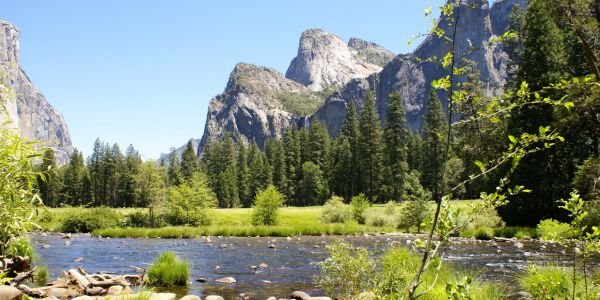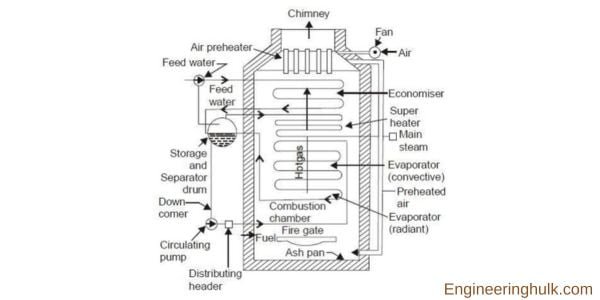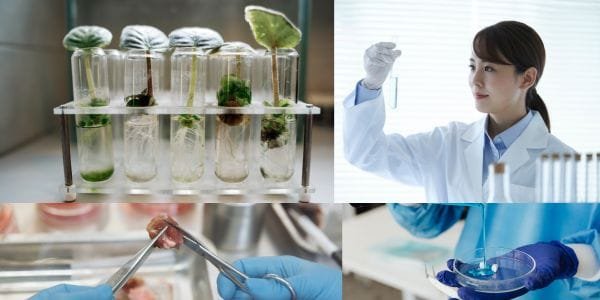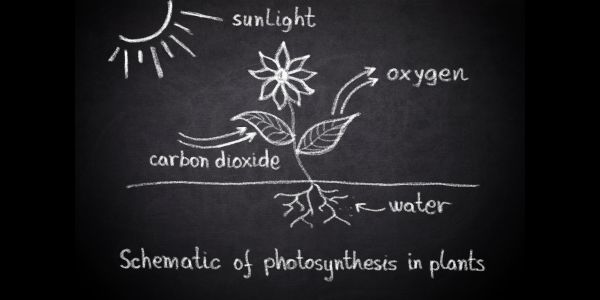Table of Contents
Definition of an Ecosystem:
An ecosystem refers to a community of living organisms, along with their physical environment, interacting as a functioning unit. It encompasses all the biological, physical, and chemical factors that influence the organisms within it. Ecosystems can be found on various scales, ranging from small areas like a pond to vast regions such as a rainforest.
Components of an Ecosystem:
Biotic Components:
Biotic components comprise all living organisms within an ecosystem. This includes plants, animals, fungi, bacteria, and other microorganisms. Each organism fulfills a specific role and contributes to the overall functioning of the ecosystem.
Biotic components encompass all living organisms within an ecosystem, including:
a. Producers:
Producers, also known as autotrophs, are organisms capable of converting inorganic substances into organic compounds through photosynthesis or chemosynthesis. They form the base of the food chain, capturing energy from the sun or chemical reactions and converting it into usable forms. Examples include plants, algae, and some bacteria.
b. Consumers:
Consumers are organisms that rely on other organisms for energy and nutrients. They are classified into primary, secondary, and tertiary consumers based on their position in the food chain. Primary consumers (herbivores) feed directly on producers, while secondary and tertiary consumers (carnivores and omnivores) consume other consumers.
c. Decomposers:
Decomposers break down dead organisms and organic matter, recycling nutrients back into the ecosystem. They play a crucial role in the nutrient cycle and include bacteria, fungi, and detritivores like earthworms.
Abiotic Components:
Abiotic components consist of non-living factors that shape the ecosystem. These include air, water, sunlight, temperature, soil composition, and nutrients. Abiotic factors influence the distribution and abundance of organisms within an ecosystem.
Abiotic factors refer to the non-living elements within an ecosystem that significantly influence its structure and function. These include:
a. Climate:
Climate encompasses temperature, humidity, rainfall, wind patterns, and other weather conditions prevailing in a particular area. It plays a vital role in determining the types of organisms that can thrive in an ecosystem.
b. Geology and Topography:
Geological factors such as soil composition, mineral content, and topographic features like mountains, valleys, and rivers shape the physical landscape of an ecosystem. These features influence water availability, drainage patterns, and nutrient distribution.
c. Water Bodies:
Rivers, lakes, ponds, and oceans contribute to the overall structure of an ecosystem. They provide habitats for aquatic organisms, influence climatic conditions, and serve as transportation routes for various materials.
d. Soil:
Soil composition, texture, and nutrient content affect the growth and distribution of plants, which, in turn, influence the entire food chain within the ecosystem. Different types of soil support different types of organisms.
Trophic Levels:
Trophic levels define the hierarchical structure of energy transfer within an ecosystem. These levels include:
a. Primary Producers:
As mentioned earlier, primary producers (plants, and algae) convert solar energy into chemical energy through photosynthesis, forming the first trophic level.
b. Primary Consumers:
Herbivores that consume producers belong to the second trophic level. They obtain energy and nutrients by feeding on plants or algae.
c. Secondary Consumers:
These are carnivores that consume herbivores, occupying the third trophic level. They obtain energy indirectly from the producers.
d. Tertiary Consumers:
Tertiary consumers are top predators that feed on other carnivores, occupying the fourth trophic level.
Food Chains and Food Webs:
Food chains and food webs represent the transfer of energy and nutrients within an ecosystem. A food chain is a linear representation of who eats whom, while a food web depicts a complex network of interconnected food chains.

The Various Types of Ecosystems:
Ecosystems are diverse and dynamic systems that encompass a wide range of habitats and organisms. Understanding the different types of ecosystems is crucial for studying the intricacies of nature, conserving biodiversity, and making informed environmental decisions. The various types of ecosystems found on our planet highlight their unique characteristics and significance.
1. Terrestrial Ecosystems:
Terrestrial ecosystems are land-based habitats that can be further classified into several distinct types:
a. Forest Ecosystems:
Forests are expansive ecosystems characterized by dense vegetation dominated by trees. They can be further divided into tropical rainforests, temperate forests, and boreal forests. Forests support a remarkable diversity of flora and fauna, play a vital role in carbon sequestration, and provide numerous ecosystem services such as water regulation and soil stabilization.
b. Grassland Ecosystems:
Grasslands are vast open spaces dominated by grasses and herbaceous plants. They occur in both tropical and temperate regions and support grazing herbivores like antelopes and bison. Grasslands are essential for agricultural production, carbon storage, and maintaining biodiversity.
c. Desert Ecosystems:
Deserts are arid regions characterized by low precipitation levels and extreme temperature fluctuations. They support unique plant and animal adaptations to survive in harsh conditions. Desert ecosystems play a critical role in soil formation, and water conservation, and provide habitats for specialized organisms.
d. Tundra Ecosystems:
Tundra ecosystems exist in cold, treeless regions with short growing seasons. They are found in the Arctic and high mountain regions. Tundra vegetation consists of mosses, lichens, and dwarf shrubs. These ecosystems are fragile, but they support various migratory species, such as caribou and polar bears.
2. Aquatic Ecosystems:
Aquatic ecosystems encompass various types of water bodies and can be classified as follows:
a. Freshwater Ecosystems:
Freshwater ecosystems include rivers, lakes, ponds, and wetlands. They are home to a wide range of plants, fish, amphibians, and invertebrates. These ecosystems play a crucial role in water filtration, flood regulation, and providing habitats for numerous species.
b. Marine Ecosystems:
Marine ecosystems cover vast oceanic regions, including coral reefs, estuaries, and the deep sea. Coral reefs are the most diverse marine ecosystems, supporting a multitude of species. Oceans are essential for climate regulation, providing oxygen, and acting as a major food source for human populations.
c. Estuarine Ecosystems:
Estuaries are transitional zones where freshwater from rivers mixes with saltwater from the ocean. They are highly productive areas, supporting diverse plant and animal communities. Estuaries serve as nurseries for fish, filter pollutants, and provide protection against coastal erosion.
3. Urban Ecosystems:
Urban ecosystems are human-made environments with unique ecological dynamics:
a. Urban Parks and Gardens: These green spaces within cities serve as mini-ecosystems, providing recreational areas, supporting urban wildlife, and improving air quality.
b. Rooftop Gardens: Rooftop gardens contribute to urban biodiversity, reduce urban heat island effects, and provide insulation benefits.
c. Wetland Restoration Projects: In some urban areas, efforts are made to restore wetland ecosystems, promoting water filtration, flood control, and providing habitats for water-dependent species.
4. Terrestrial and Aquatic Ecosystems:
Terrestrial and aquatic ecosystems represent two distinct types, each with its unique characteristics, flora, fauna, and environmental dynamics.
4.1 Terrestrial Ecosystems: A Land-Based Marvel
Terrestrial ecosystems encompass a vast range of habitats, including forests, grasslands, deserts, and tundra, which support an incredible diversity of plant and animal life. These ecosystems are primarily characterized by their dependence on soil for nutrient availability and water retention. Terrestrial plants play a vital role in capturing sunlight through photosynthesis, converting it into energy, and creating a food source for herbivores and carnivores within the ecosystem.
Key Functions of Terrestrial Ecosystems:
1. Carbon Sequestration: Terrestrial ecosystems, particularly forests, play a crucial role in carbon sequestration, absorbing and storing significant amounts of carbon dioxide through photosynthesis. This process helps mitigate climate change by reducing the concentration of greenhouse gases in the atmosphere.
2. Habitat Provision: Terrestrial ecosystems provide a diverse range of habitats for countless species. Forests, for instance, support a wide variety of flora and fauna, including trees, shrubs, mammals, birds, reptiles, and insects. The complex web of interdependencies within these ecosystems ensures the survival and continuity of numerous species.
3. Soil Formation and Nutrient Cycling: Terrestrial ecosystems contribute to the formation of fertile soils through the accumulation and decomposition of organic matter. Decomposers, such as fungi and bacteria, break down dead plant and animal material, releasing essential nutrients back into the soil. This nutrient-cycling process supports the growth of vegetation and sustains the entire ecosystem.
4.2 Aquatic Ecosystems: A Watery Haven
Aquatic ecosystems encompass various bodies of water, including rivers, lakes, ponds, wetlands, and oceans. They are home to a diverse range of aquatic organisms, including fish, algae, amphibians, reptiles, and water-dependent birds. Aquatic ecosystems exhibit unique physical and chemical properties, including temperature, salinity, and dissolved oxygen levels, which influence the types of organisms that can thrive within them.
Key Functions of Aquatic Ecosystems:
1. Biodiversity and Habitat Provision: Aquatic ecosystems are incredibly biodiverse, supporting a vast array of species. Coral reefs, for example, are among the most diverse ecosystems on the planet, providing habitat and shelter for numerous marine organisms. Wetlands and estuaries serve as critical nurseries for fish and provide breeding grounds for migratory bird species.
2. Nutrient Cycling and Oxygen Production: Aquatic ecosystems play a crucial role in nutrient cycling. Phytoplankton and algae, through photosynthesis, absorb carbon dioxide and release oxygen, contributing a significant portion of the Earth’s oxygen supply. These organisms also form the basis of the aquatic food web, providing nourishment for herbivorous and carnivorous species.
3. Water Filtration and Purification: Aquatic ecosystems act as natural filters, purifying water through the absorption and removal of pollutants. Wetlands and marshes, for instance, help to trap and break down contaminants, ensuring the quality of water that eventually flows into rivers, lakes, and oceans. This purification process is vital for the health of both aquatic organisms and human populations.
4.3 The Interplay Between Terrestrial and Aquatic Ecosystems
Terrestrial and aquatic ecosystems are intricately connected and influence each other in numerous ways:
1. Water Flow and Nutrient Exchange: Terrestrial ecosystems contribute to the flow of water into aquatic ecosystems through runoff
, which carries nutrients, sediments, and organic matter. These inputs are crucial for supporting aquatic plant and animal life.
2. Riparian Zones: Riparian zones, found at the interface of terrestrial and aquatic ecosystems along riverbanks, serve as transition areas where both terrestrial and aquatic organisms coexist. They provide important habitat, contribute to nutrient cycling, and help stabilize the riverbanks.
3. Aquatic-Dependent Terrestrial Species: Some terrestrial species rely on aquatic ecosystems for their survival. For example, migratory birds depend on wetlands and coastal areas as essential stopover points during their long-distance journeys.
The Essential Functions of an Ecosystem:
The key functions of an ecosystem and shed light on their significance for maintaining ecological equilibrium.
1. Biodiversity and Habitat Provision
One of the primary functions of an ecosystem is the provision of habitat for a wide array of organisms. Ecosystems support a diverse range of species, including plants, animals, birds, insects, and microorganisms.
The variety of habitats created by ecosystems, such as forests, grasslands, wetlands, and coral reefs, offer unique niches and resources that allow different species to thrive. Biodiversity within ecosystems ensures the stability and resilience of these habitats, enabling them to adapt to changes in their surroundings.
2. Nutrient Cycling and Soil Formation
Ecosystems are responsible for the recycling and redistribution of nutrients, an essential process for sustaining life. Through various biological and physical processes, nutrients are continuously cycled between living organisms, soil, water, and the atmosphere. Decomposers, such as bacteria and fungi, break down dead organic matter, releasing nutrients back into the ecosystem.
Plants then take up these nutrients, which are subsequently transferred to herbivores, carnivores, and other organisms within the food chain. This nutrient cycling process ensures the availability of vital elements, such as nitrogen, phosphorus, and carbon, for all living organisms and promotes healthy soil formation.
3. Pollination and Seed Dispersal
Ecosystems provide crucial services through pollination and seed dispersal, which are vital for the reproduction and survival of many plant species. Pollinators, such as bees, butterflies, birds, and bats, transfer pollen between flowers, facilitating fertilization and fruit production.
This process ensures genetic diversity and enables the continuity of plant populations. Likewise, seed dispersal mechanisms, including wind, water, animals, and birds, help disperse seeds to new areas, allowing plant species to colonize different habitats and maintain their population dynamics.
4. Climate Regulation and Carbon Sequestration
Ecosystems play a crucial role in regulating climate patterns and mitigating the impacts of climate change. Forests, for example, act as carbon sinks, absorbing carbon dioxide from the atmosphere through photosynthesis and storing it in biomass and soil. This process, known as carbon sequestration, helps offset greenhouse gas emissions and reduces the concentration of carbon dioxide, a major driver of climate change.
Additionally, ecosystems influence local weather patterns by regulating temperature, humidity, and precipitation through evapotranspiration, thereby maintaining climatic stability.
5. Water Purification and Regulation
Ecosystems act as natural filtration systems, purifying water and regulating its flow. Wetlands, marshes, and forests help filter pollutants and remove sediments from water bodies, improving water quality. Moreover, the vegetation within ecosystems plays a vital role in water regulation by absorbing and storing water, reducing the risk of floods and droughts.
Ecosystems help recharge groundwater, maintain the flow of rivers and streams, and regulate water cycles, thus ensuring a sustainable water supply for both human and natural systems.
Interactions within an Ecosystem:
Ecosystems are characterized by intricate interactions between biotic and abiotic components. These interactions can be classified into three main categories:
a. Mutualistic Interactions:
Mutualistic interactions occur when two or more species benefit from their relationship. An example of mutualism is the relationship between bees and flowers, where bees receive nectar and pollen for food while aiding in the pollination process.
b. Predatory Interactions:
Predatory interactions involve the consumption of one organism by another. Predators help control the population of prey species and maintain a balance in the ecosystem. For instance, the relationship between lions and zebras in the African savannah exemplifies a predator-prey interaction.
c. Competitive Interactions:
Competitive interactions arise when organisms compete for resources such as food, water, or territory. This competition can lead to the survival of the fittest and the adaptation of species to different ecological niches.
Importance of Ecosystems:
Ecosystems provide numerous benefits that are essential for life on Earth. Here are some key reasons why ecosystems are vital:
a. Biodiversity:
Ecosystems support a wide array of plant and animal species, contributing to the planet’s biodiversity. Biodiversity ensures ecosystem resilience and enhances ecosystem services.
b. Environmental Balance:
Ecosystems help regulate the physical and chemical conditions of the planet. They regulate climate, control floods, purify water and air, and mitigate the impact of natural disasters.
c. Nutrient Cycling:
Ecosystems play a crucial role in nutrient cycling. Decomposers break down dead organic matter, returning nutrients to the soil for reuse by other organisms. This cycling sustains the flow of energy and nutrients within the ecosystem.
d. Economic Value:
Ecosystems provide various goods and services that have economic value. These include food, medicine, timber, water resources, and recreational opportunities, contributing to local and global economies.
e. Cultural Significance:
Ecosystems hold cultural significance for indigenous communities, providing spiritual, aesthetic, and recreational value. They are often deeply intertwined with cultural practices, traditions, and identities.
Threats to Ecosystems:
Unfortunately, ecosystems worldwide are facing significant threats due to human activities. Deforestation, pollution, climate change, habitat destruction, and overexploitation of resources are some of the primary drivers of ecosystem degradation. Protecting and restoring ecosystems is crucial for sustaining life on our planet.
Also, read Cuevana





























Comments on “Structure and function of the ecosystem – In Details 2023”
Comments are closed.